You are using an out of date browser. It may not display this or other websites correctly.
You should upgrade or use an alternative browser.
You should upgrade or use an alternative browser.
Room correction
- Thread starter krismusic
- Start date
slartibartfast
Major Contributor
- Joined
- Apr 18, 2024
- Messages
- 5,627
We've all done itNo my mistake, posting from a mobile device didn't spot which thread I was in!
You’re forgiven by pastor quack.I may have missed the point and misspoke. I only read your one post. Forgive me.
I REALLY want .cal file support for my Dayton Audio IMM-6 and IMM-6C external microphones. I feel that when I do something, I try to do it as well as possible, or at least have that feeling. Do you think this support will ever be integrated? I was quietly hoping that it would be possible already within the RC Beta testing...
Do you think it will make that much difference. I fully understand calibration (I work in metrology) but unless there is significant variation device to device from Dayton (unlikely I would have thought) then in practice it will make little to no (audible) difference. I agree though, that to do it properly with confidence then the cal file is important. I'm going to compare the iMM-6 with the C version next week when it arrives (had to order from Amazon US to the UK) so that might give some indication of the value of using the cal file.*I REALLY want .cal file support for my Dayton Audio IMM-6 and IMM-6C external microphones. I feel that when I do something, I try to do it as well as possible, or at least have that feeling. Do you think this support will ever be integrated? I was quietly hoping that it would be possible already within the RC Beta testing...
*caveat: I'll be using the Pro Plus. Still valid though as we're checking the mic device variation.
(Note to self: remember this is the Wiim AMP thread...)
Like this, first of all I only have Pro Plus. I took the measurements in the same location, with the Dayton Audio microphones mounted on a tripod. There certainly won't be much difference between the individual pieces, but for my own good feeling I would like to use them with the calibration file, especially since it is available for each piece. The attachment also contains the results of individual measurements.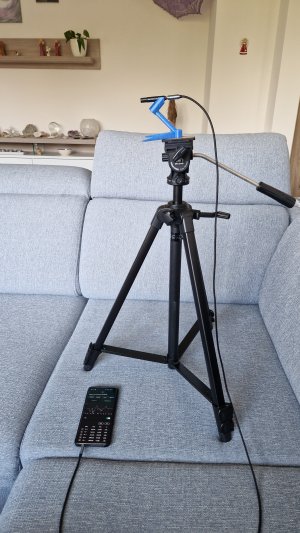

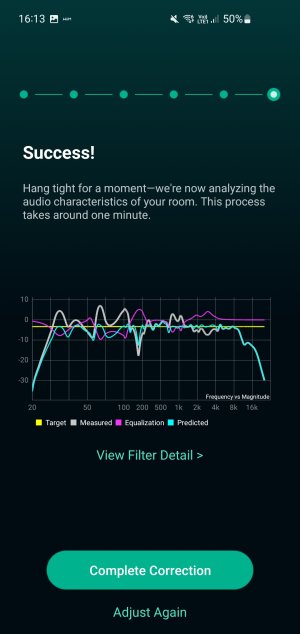
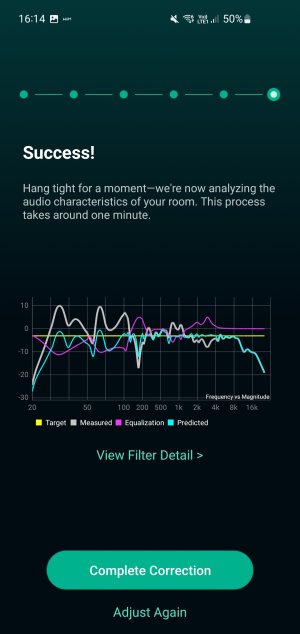




The first measurement is yet another proof that mics build into smartphones should never be used for correction above 3 or 4 kHz. Never!The first measurement is from the built-in microphone of the Galaxy S10, the second IMM-6 and the third IMM-6C. The first is different, but the second and third measurements are somewhat similar. Measured in the same position.
Did you change the frequency range setting for correction between these measurements?
I reckon they're pretty useless below 100Hz too.The first measurement is yet another proof that mics build into smartphones should never be used for correction above 3 or 4 kHz. Never!
Did you change the frequency range setting for correction between these measurements?
Thank you, but it's just that it's not very acoustically adjusted! There are some shelves, some cupboards, a corner sofa, a piece of carpet and most importantly a large window. The natural reverberation is quite large, but the WiiM RC helps quite a bit. It is with the help of the calibration file that I would like to get the most out of the RC. For comparison, I am also sending the alignment in my main listening room in the basement, where I have a 2" Neumann KH150 + 1* KH750 DSP setup, alignment using the Neumann MA1 system.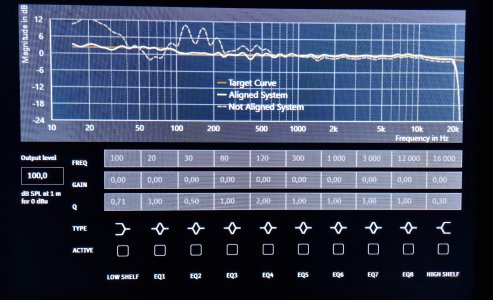

Actually, this Galaxy S10 mic seems to do rather well down to 30 Hz when compared to the iMM-6 and the iMM6C.I reckon they're pretty useless below 100Hz too.
I've got the Dayton cal files installed on my Samsung and LGV30 and using the Audio Tools app (that Dayton recommends) both phones are all over the place below 100Hz. Much more consistent using the Dayton and the nodes / likes are bigger too, which is what I see using Wiim app. I've concluded that the inbuilt mics on those 2 devices anyway can't be used with any confidence.Actually, this Galaxy S10 mic seems to do rather well down to 30 Hz when compared to the iMM-6 and the iMM6C.
I don't generally disagree, but just in this case here (@muchacho) the phone's app is close to the Daytons (and their calibration shouldn't be off by more than 1 - 1.5 dB at 30 Hz.I've got the Dayton cal files installed on my Samsung and LGV30 and using the Audio Tools app (that Dayton recommends) both phones are all over the place below 100Hz. Much more consistent using the Dayton and the nodes / likes are bigger too, which is what I see using Wiim app. I've concluded that the inbuilt mics on those 2 devices anyway can't be used with any confidence.
I guess that serves to highlight the variation in the performance of the phone mics across android devices, which of course are not knowingly calibrated so a Dayton or similar is probably mandatory. That's probably the key takeaway from this thread.
I reckon they're pretty useless below 100Hz too.
This is NOT my experience with iphones
I think the iPhone as a recording device is an entirely different proposition to your average android device. Anyway, back to the thread topic, my iMM-6C turned up today. So I plugged it into the S23 ultra and did some tests. Similar to the standard iMM-6 so ultimately didn't need to buy it, but it's a useful reference. Did some more device to Dayton comparisons but using a much wider frequency sweep correction of 30Hz to 18kHz as I've got large spaces of naked wooden floors, and of course we should expect the Dayton to be accurate up to the audible threshold frequencies.This is NOT my experience with iphones
First screenshot is the S23 mic, the second is the Dayton C mic. The S23 mic is under compensating bass and making some horrible corrections in the upper midrange.
I suspect the HF lift from the Dayton curve is due to the tweeter grilles fitted to my Elacs which are further apart than ideal.
Conclusion: if you own a Galaxy S23 Ultra then you really do need an external mic of suitable quality to get the most out of the RC option.
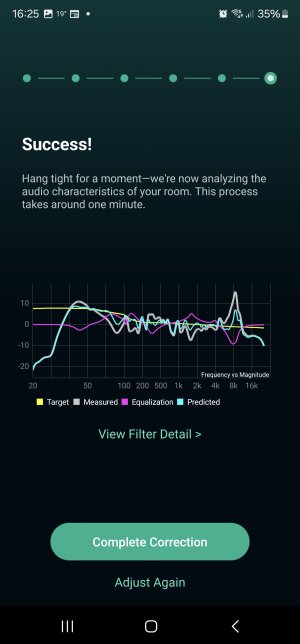
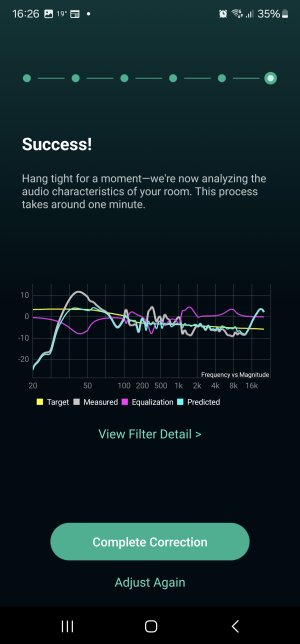
Similar threads
- Replies
- 9
- Views
- 335
- Replies
- 49
- Views
- 2K
- Replies
- 10
- Views
- 308
- Replies
- 36
- Views
- 1K
